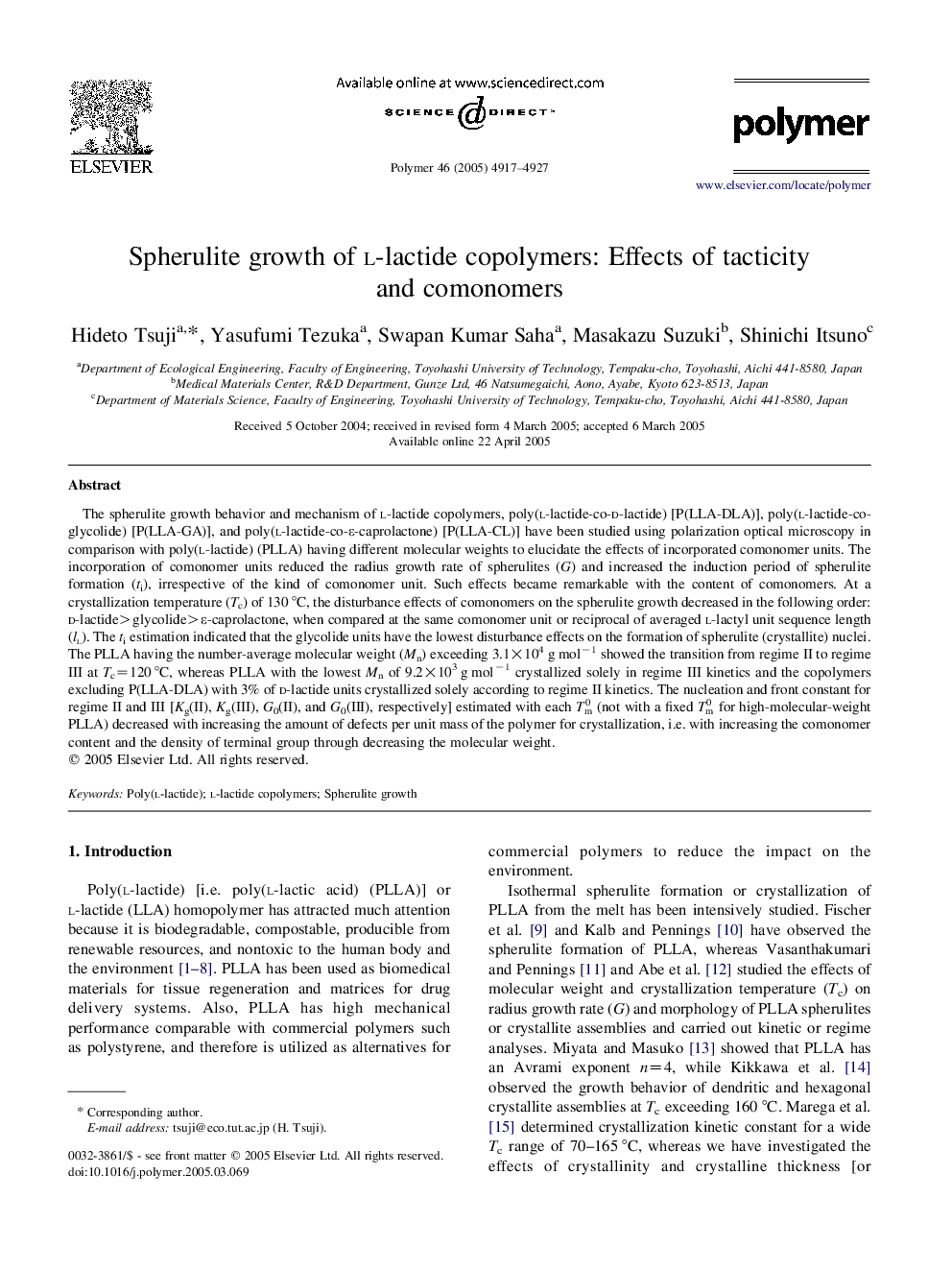| Article ID | Journal | Published Year | Pages | File Type |
|---|---|---|---|---|
| 5191657 | Polymer | 2005 | 11 Pages |
The spherulite growth behavior and mechanism of l-lactide copolymers, poly(l-lactide-co-d-lactide) [P(LLA-DLA)], poly(l-lactide-co-glycolide) [P(LLA-GA)], and poly(l-lactide-co-ε-caprolactone) [P(LLA-CL)] have been studied using polarization optical microscopy in comparison with poly(l-lactide) (PLLA) having different molecular weights to elucidate the effects of incorporated comonomer units. The incorporation of comonomer units reduced the radius growth rate of spherulites (G) and increased the induction period of spherulite formation (ti), irrespective of the kind of comonomer unit. Such effects became remarkable with the content of comonomers. At a crystallization temperature (Tc) of 130 °C, the disturbance effects of comonomers on the spherulite growth decreased in the following order: d-lactide>glycolide>ε-caprolactone, when compared at the same comonomer unit or reciprocal of averaged l-lactyl unit sequence length (ll). The ti estimation indicated that the glycolide units have the lowest disturbance effects on the formation of spherulite (crystallite) nuclei. The PLLA having the number-average molecular weight (Mn) exceeding 3.1Ã104 g molâ1 showed the transition from regime II to regime III at Tc=120 °C, whereas PLLA with the lowest Mn of 9.2Ã103 g molâ1 crystallized solely in regime III kinetics and the copolymers excluding P(LLA-DLA) with 3% of d-lactide units crystallized solely according to regime II kinetics. The nucleation and front constant for regime II and III [Kg(II), Kg(III), G0(II), and G0(III), respectively] estimated with each Tm0 (not with a fixed Tm0 for high-molecular-weight PLLA) decreased with increasing the amount of defects per unit mass of the polymer for crystallization, i.e. with increasing the comonomer content and the density of terminal group through decreasing the molecular weight.
